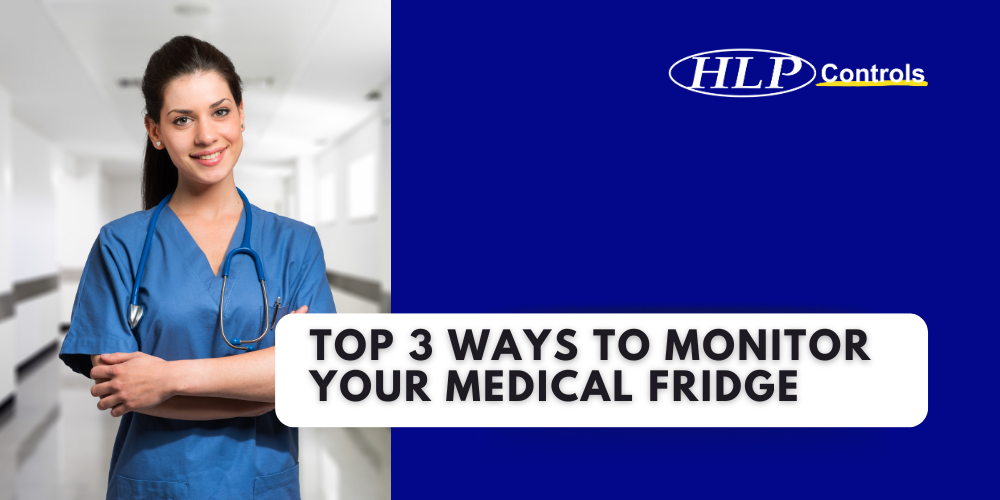The importance of maintaining proper temperature conditions in medical fridges cannot be overstated. With valuable medical supplies often worth thousands of dollars stored within, it's crucial that these fridges consistently operate within the temperature range of 2 to 8 degrees Celsius. To ensure the safety and efficacy of medications, monitoring the temperature of your medical fridge is a paramount task. In this article, we'll delve into the three best methods for effectively and efficiently monitoring your medical fridge.
- Manual Monitoring with HACCP-Approved Digital Thermometers
The manual monitoring method offers simplicity and reliability. It involves using HACCP-approved digital thermometers, such as the Medi-Temp, which are readily available from medical suppliers and hospitality stores. These thermometers come with built-in alarms and are calibrated to maintain temperatures between 2 and 8 degrees Celsius. While the process relies on human intervention, it is straightforward and cost-effective.
Facility managers typically perform manual checks twice a day and record the temperature readings either on paper or in Excel spreadsheets. The major advantage of this method is its accuracy, as the thermometer is a direct reflection of the fridge's temperature. However, the potential drawback lies in human diligence during peak hours. Regular checks may become inconsistent, and diligent record-keeping becomes essential. Despite these challenges, manual monitoring remains a viable option for smaller facilities with limited budgets.
- Semi-Automatic Medical Fridge Loggers
Offering a balanced approach between human intervention and automation, semi-automatic medical fridge loggers are a popular choice. These loggers continually monitor fridge temperatures around the clock for a predetermined period, typically 2 to 5 weeks. The recorded data can then be easily downloaded onto a computer for analysis. This method ensures consistent monitoring without the need for constant attention.
A notable example of a reliable semi-automatic logger is the Medi-Log™II. It offers ease of use and presents data in clear, user-friendly reports. The beauty of this method lies in its engagement of staff. While staff members still need to download and analyse the data periodically, the process is streamlined and effective. The reports generated can be organised and stored digitally, simplifying record-keeping for safety audits.
- Fully Automatic Cloud-Connected Loggers
For a hassle-free and technologically advanced solution, fully automatic cloud-connected loggers are the pinnacle of medical fridge monitoring. These loggers are designed to connect to the cloud and upload temperature data at regular intervals, often every 5 to 10 minutes. In the event of a power outage, these loggers feature battery backup to ensure uninterrupted data collection.
One of the standout features of fully automatic loggers is their ability to provide real-time alerts. These alerts can be sent through various channels, including the device itself, email, SMS, or even phone calls. This level of notification ensures that temperature breaches are promptly addressed, minimising the risk of compromised medications. Brands like Senso by HLP Controls have gained a reputation for reliability in this category.
While each of these methods has its merits, the choice ultimately depends on the unique needs and budget of your medical facility. Manual monitoring offers simplicity and cost-effectiveness but demands consistent human attention. Semi-automatic loggers strike a balance between human involvement and automation, ensuring continuous monitoring without overwhelming staff. On the other hand, fully automatic loggers provide the utmost convenience, ensuring real-time data collection and instant alerts, albeit at a higher cost.
The proper monitoring of medical fridges is not only a regulatory requirement but a crucial step in ensuring the safety and efficacy of medications. With the potential for substantial financial losses and patient harm in the event of temperature excursions, investing in a reliable monitoring system is a wise decision. Whether you opt for the simplicity of manual monitoring, the balance of semi-automatic loggers, or the convenience of fully automatic cloud-connected loggers, the key is to choose a method that aligns with your facility's operational needs and resources. By prioritising temperature monitoring, you're taking a proactive step towards maintaining the integrity of your medical supplies and, ultimately, the well-being of your patients.
For additional details or to purchase the temperature logger that best fits your needs, simply click on one of the links below

